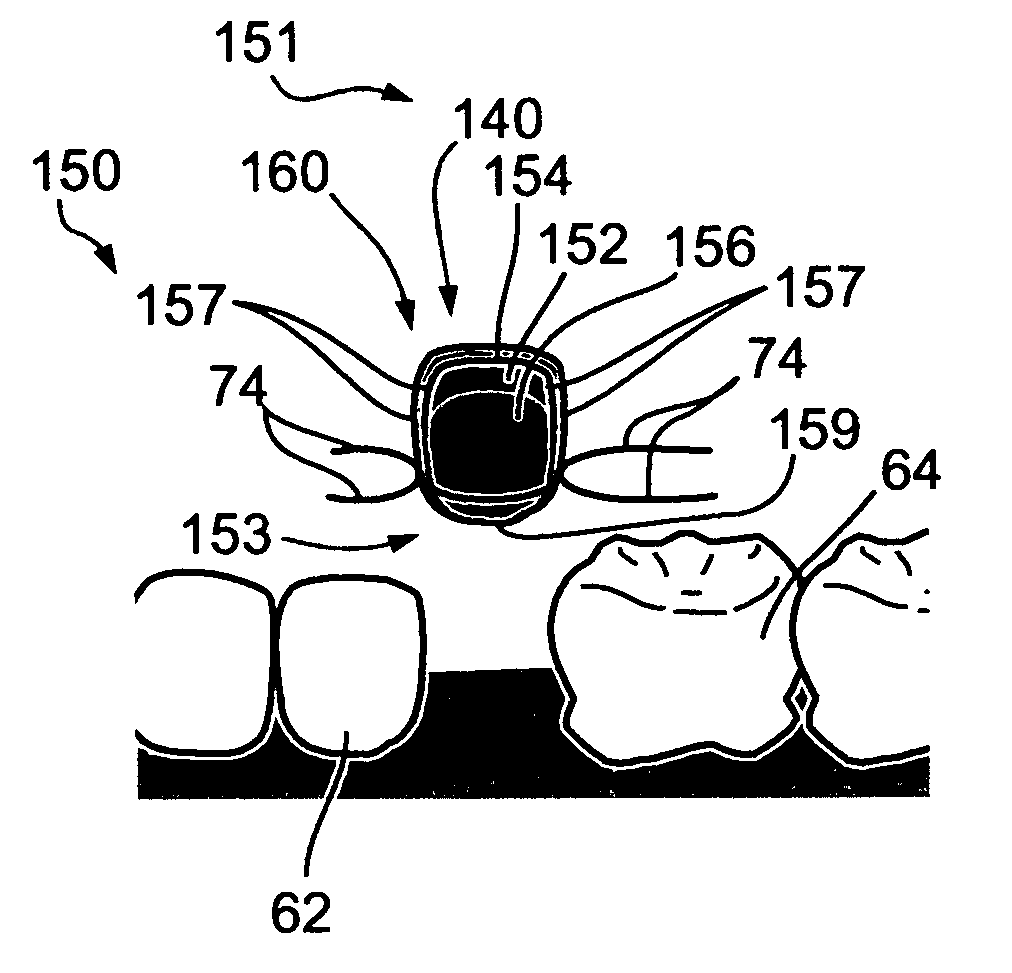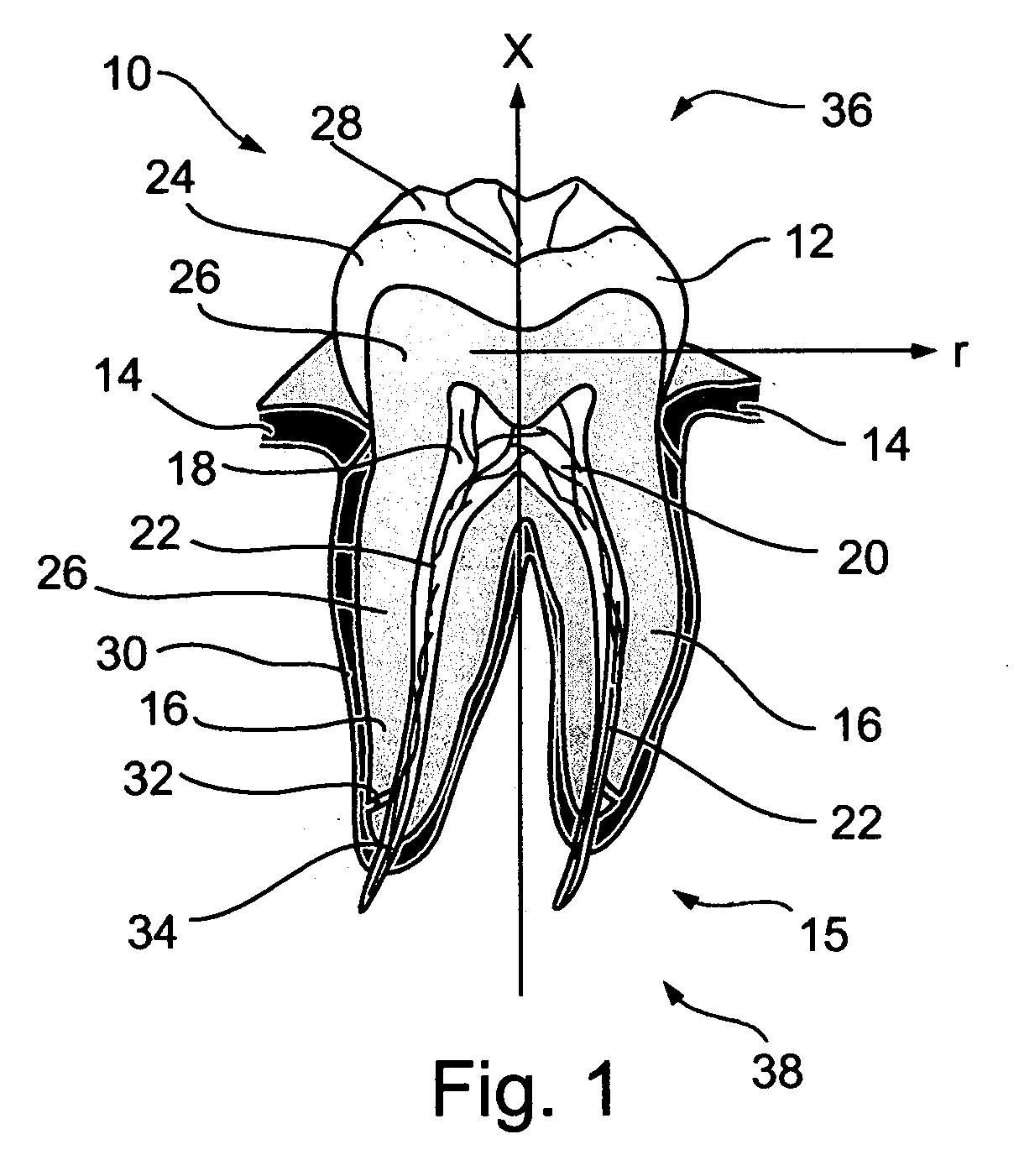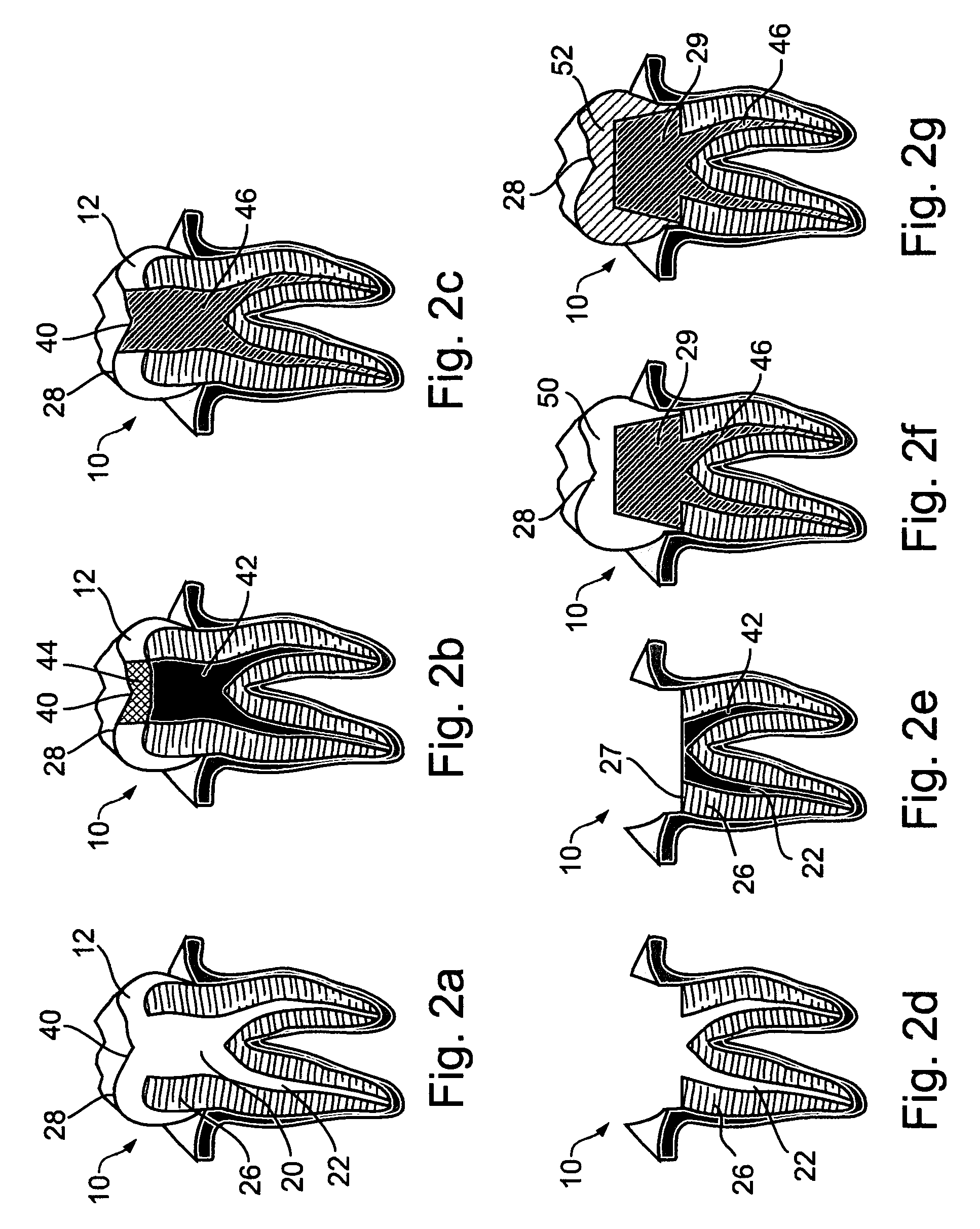Oral devices and methods for controlled drug release
a technology of oral devices and controlled drugs, applied in the field of oral devices and controlled drug release, can solve the problems of low bioavailability of orally administered drugs, the degree to which the drug is available to the target tissue, and the degree of drug availability, and achieve the effects of low bioavailability, low bioavailability, and low bioavailability
- Summary
- Abstract
- Description
- Claims
- Application Information
AI Technical Summary
Problems solved by technology
Method used
Image
Examples
example 1
Passive, Controlled Drug Release
[0312] Device 140, designed as prosthetic tooth crown 160 (FIGS. 8A-8B) for passive, controlled drug release, or another device for passive, controlled drug release may include drug reservoir 156, in a dosage form of a tablet which contains cyclosporine, coated with a semi-permeable membrane that controls the drug release by osmosis. The semi-permeable is formed of hydrophobic polymers, such as cellulose acetate, or ethocel, mixed with water soluble additives, such as sugar, PEG's, and the like. Upon administration, the soluble additives dissolves and a semipermeable membrane is created. The cyclosporine is released at a rate of 0.5-2 mg per day, continuously. The tablet may be replaced about once a month. By comparison, when ingested, gastro-retention in the upper gastrointestinal tract generally does not exceed about 12 hours.
[0313] In a similar manner, levodopa may be used, in place of cyclosporine. Alternatively, growth hormones, combined with sta...
example 2
Delayed, Passive, Controlled Drug Release
[0314] Device 140, designed as prosthetic tooth crown 160 (FIGS. 8A-8B) for passive, controlled drug release, or another device for passive, controlled drug release may include several drug reservoirs 156, wherein a first reservoir includes a dosage form adapted for passive, controlled release, for example, by diffusion and erosion, and a second drug reservoir includes a dosage form which is coated by a special functional coating, designed to delay the release from the second reservoir until the dosage form of the first reservoir is depleted. In this manner, the interval between replacements may be extended.
example 3
Pulsatile, Passive, Controlled Drug Release
[0315] Device 140, designed as prosthetic tooth crown 160 (FIGS. 8A-8B) for passive, controlled drug release, or another device for passive, controlled drug release may include a drug reservoir 156, which includes a dosage form having a multi-layer coating, designed for pulsatile passive controlled release, which may be synchronized, for example, with circadian cycles, for a desired chronotherapy.
PUM
 Login to View More
Login to View More Abstract
Description
Claims
Application Information
 Login to View More
Login to View More - R&D
- Intellectual Property
- Life Sciences
- Materials
- Tech Scout
- Unparalleled Data Quality
- Higher Quality Content
- 60% Fewer Hallucinations
Browse by: Latest US Patents, China's latest patents, Technical Efficacy Thesaurus, Application Domain, Technology Topic, Popular Technical Reports.
© 2025 PatSnap. All rights reserved.Legal|Privacy policy|Modern Slavery Act Transparency Statement|Sitemap|About US| Contact US: help@patsnap.com



